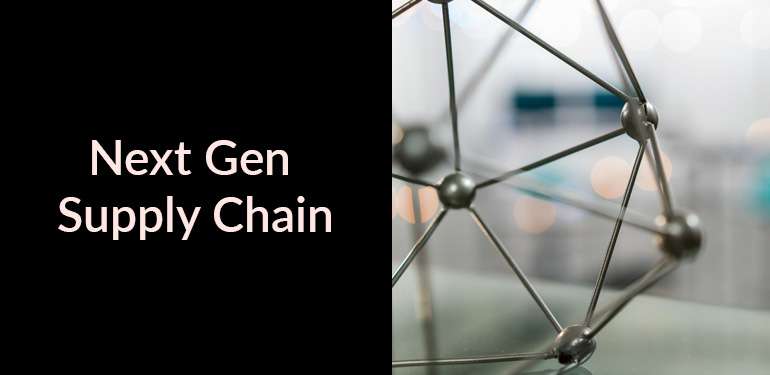Internet of Things (IoT) accompanied by Analytics is driving rapid increase in the digitization of supply chain management. This highly digitized next gen supply chain is being dubbed as Supply Chain 4.0 and will be a key element in growing the supply chain market to beyond $75B by 2030 (Next-Gen Supply Chain Market – Global Forecast to 2030). It has the potential of making organizations agile and efficient and can significantly improve customer satisfaction.
Role of IoT in Next-gen Supply Chain
Increased digitization starts with sensors and other communications devices that are installed to provide real-time and accurate monitoring and tracking data related to supply chain operations. IoT solutions enabling the next-gen supply chain perform several major functions:
- IoT facilitates automated data collection from various points in the supply chain and transmit it securely to the backend processing servers in real-time
- IoT platforms are architected to ingest and process the sensor data at arrival and on a massive scale
- The ingested IoT data then feeds analytics engines to deliver business insights that help optimize supply chain planning, procurement, operations, customer services and sales.
- IoT Analytics leverages machine learning to analyze large amounts of complex IoT data to provide real-time insights into a number of operational aspects ranging from process changes and product design to inventory management, location based tracking, warehouse management and demand forecasting.
Digitizing the Supply Chain with IoT
- Identify key activities in the supply chain that need to be monitored / tracked along with relevant data that could be collected about those activities. This data should help develop the business insights that the next-gen supply chain promises to deliver.
- Run pilots using prototypes of different types of sensors and payloads and select the most suitable connected options for IoT data collection
- Once final sensor type, communication protocol and payloads are decided, provision and deploy actual sensors along with an IoT platform to ingest, process, persist and visualize the data
- Select and deploy an IoT analytics solution that can process real-time streaming data as well as a large volume of data packets from different types of sensors. The solution should be easy to integrate with your existing ERP, CRM and/or other business applications to help in the evolution of your connected next-gen supply chain.
- Develop real-time actionable insights from the IoT data that has been ingested and processed from the supply chain. Take action based on the insights delivered through the combination of IoT and Analytics solutions.
Other technologies supporting evolution of next-gen Supply Chain
However, the growing number of smart devices and the volume of data they are streaming has created challenges in terms of transport and security of that data itself! Fortunately, 5G is around the corner and promises to usher in a new era of high speed and low latency mobile networks that can help track even the smallest items in real time.
To keep up with the pace of a demand driven supply chain, Robots will need to be deployed in large numbers to pick, store, sort and transport materials in warehouses. This is not just a technology play – there is a very real demographic at play here with the shortage of skilled labor forcing the increased adoption of robotic process automation.
Over the next few years, supply chains will become increasingly dynamic, responsive and interconnected to the entire ecosystem in which businesses operate. Supply Chain digitization will drive disruptions that create opportunities to engage customers and fuel growth and profits.
How can Bridgera help?
Bridgera is the author of Bridgera IoT and Bridgera Monitoring: two frameworks that are highly customizable and configurable to accelerate the implementation of IoT solutions across a broad range of industries. They are supported by Bridgera’s Digital Twin and Analytics Dashboard.
Our Digital Twin is a rapid prototyping tool that can help our clients simulate a variety of sensors, communication protocols and payloads to evaluate and select the right options without investing the time or the money in expensive hardware design. Our Analytics Dashboard is a self service utility that allows users to visualize relationships between IoT data elements. Thus delivering critical business insights.
IoT solution architecture is complex to say the least. The technology stack requires a team of IT professionals with a host of different skills. It can take years to build a solution from the ground up. Bridgera is ready with all the IoT resources to help you launch your next-gen supply chain in a matter of weeks!
Contact us today to learn more.
